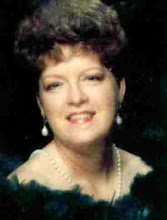
Top 10 Tips for Incorporating President's Day Themes in Your Classroom
History is often a difficult subject to teach. Students frequently have a hard time understanding how something that happened long before they were born can affect them today. This can make incorporating President's Day themes into your classroom especially difficult. Here are some ideas that you can try to get students revved up about President's day.
1. Who is your favorite president?
Most students are familiar with Mount Rushmore, though you may have to introduce it to younger students. Have students write a report on the four presidents they think should be up on the mountain.
2. Presidents on the money
Students know the importance of money, but they may not know the history behind it. Take a look at different coins and/or bills and see which presidents are featured on them. Older students can be assigned a coin to research to see how the face of money has changed throughout the years.
3. Dear Mr. President
We live in a country that was built by the people, for the people. As the head of the country, the president's job is to make the changes that the people want and/or need. Is there something that students want to see happen or something about the president they would like to know? Have them practice their letter writing skills by writing a letter to the president himself.
4. A log cabin for the president
Students may enjoy hearing about how President Lincoln grew up in poverty in a log cabin. Student can build their own log cabin (either on paper for younger students or in 3D for older students) using twigs, popsicle sticks, or other craft items.
5. Remember the presidents
While many students may only have seen one or two presidents during their lifetime, their parents, grandparents, or other adults in their life will remember several. Have them interview an adult and find interesting facts that the person remembers about different presidents that they have seen in office.
6. Tour the president's home
If you are lucky enough to live near one of the president's houses, you can see about taking your students on a field trip to see it live and in person. Otherwise, many of the historical societies have placed virtual tours online. Have students take the tours and compare how the presidents lived then to how they live now.
7. How well do you know your presidents?
Design a matching game for students. Younger students can try to identify presidents by matching names to pictures, while older students can match names to fun facts.
8. Mock election
When learning about the presidents, it is also a good time to introduce the democratic process. One way to do this is to hold mock elections. You can divide the class into democrat and republican parties, have the teams elect a member to be their candidate, and create campaigns or host debates. At the end, you can hold your own secret ballot to see which candidate won. Depending on the age of your students, you can have teams debate actual issues, like school budgets, or fun ones, like if gum should be allowed in school.
9. The White House is a zoo!
There have been some interesting White House pets throughout the years. Have students take a look at who these presidential companions were. Besides the traditional cat and dog, White House pets have included goats and turkeys!
10. White House kids
While many people know the current president, they may not be as familiar with the families that support them. Have students research the children who have spent part of their time in the White House, and write a paper on what they imagine living in the White House would be like.
The difficult aspect about history is making it come alive for your students. Once you are able to do that, they will never look at President's Day the same!
Tips by



















No comments:
Post a Comment